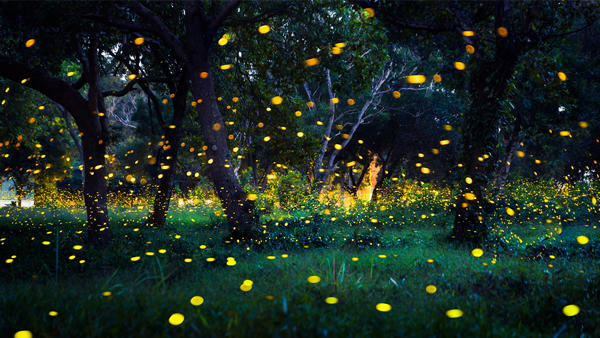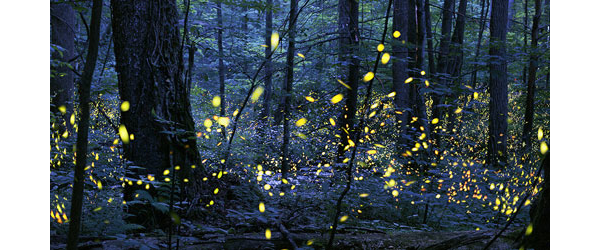
Is a Tennessee summer evening ever really complete without the mesmerizing presence of the fireflies? These tiny bioluminescent creatures that entertain us with their illuminated dancing in our own backyards have fascinated both young and old throughout history. Part science and part magic, we all find ourselves drawn to the rhythmic light show in our own backyards.
The most common question asked about fireflies is how and why do they glow? The tiny lights we see in our backyards on a balmy summer night are created by a chemical reaction. This natural process is called bioluminescence and is found in various organisms, including certain fish (think Finding Nemo), insects and marine creatures. Fireflies need two essential components in order to produce the light—luciferase (an enzyme) and luciferin (light-emitting molecule). When the two substances interact in the presence of oxygen, a chemical reaction occurs leading to the emission of light.
The main reason for the light is to communicate with potential mates, and deter predators.
Different species of fireflies have different flashing patterns. This acts as a specific language of communication with potential mates. When mating, the males fly, emitting their distinct flashes, as the female (from the same species) responds from the ground below.
Some species of firefly are notorious for their deceptive practices. They mimic the flashing patterns of other species, attracting males of those species towards them. Once lured in, they capture and devour their unsuspecting counterpart, a behavior aptly named “aggressive mimicry.”
Photo courtesy pigeonforge.com
Fireflies are not just lighting up our summer evening or starring in our favorite movies and poetry. They are also helping our gardeners and farmers. When in their larval stage, fireflies are voracious predators, feeding on various insects and invertebrates including snails and slugs. Fireflies contribute to natural pest control, making them a valuable ally for our growers.
Lightning bugs are commonly found in fields, meadows, forests and marshes. These habitats provide them with shelter, food sources and suitable conditions for their life cycle. As with so many things in nature, urbanization and habitat destruction have posed significant threats to firefly population leading to a decline in their numbers. Conservation efforts are crucial to preserve these luminous wonders for future generations to enjoy.
What would our world be without a little magic? After a long day at work, coming home to sit on our back porches and look out over our yards or fields to see an enchanting natural light show is the perfect magical end to a day. It causes us to slow down and recognize the complexity and beauty of the natural world.
Let’s make sure our great-great-grandchildren get to recognize it, too. Consider leaving your grass a little taller for a little longer, leaving rotting wood in a pile, and turning off unnecessary lights on your property to ensure the fireflies around you can thrive. Let’s strive to ensure that fireflies continue to illuminate our lives for generations to come.














